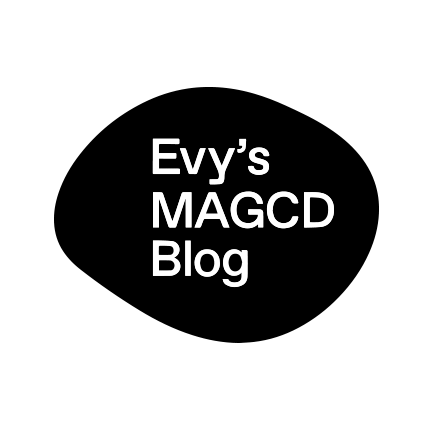I would be lying if I said this was an easy week. For this entry, I will be discussing a few thoughts on my experiences around this project so far, and how I feel it’s shaping my position regarding graphic communication design.
I started by looking at all my projects and mapping out the core message that I pursue as a potential general line of inquiry at this early stage.
- Visual communication is a flexible discipline which is constantly shaping itself and making use of the technology available at the time to disseminate ideas which shape personal perceptions and in turn society.
- Visual communication is shaped by local culture but also by external factors not controlled by people groups.
Following on this initial thoughts I went on to work on the Venn’s diagram to further dissect the themes and ideas I have been working on so far. I think what really stood out to my was the theme of visual language and it’s connection to understanding people and places. This came through particularly strongly in Methods of Investigating project.

01 – Exploring, failing and finding focus again
My initial experiments are led by the interest I recognised from Methods of Investigating project, where I started exploring the concept of local<–>foreign, in relation to Latour’s Visualisation and cognition and the way visual representations can become “artefacts” which carry intrinsic knowledge between places and people.
I explore this idea through a found object. An old postcard found at a charity shop. Narrating a journey across the chilean Patagonia. The process of making images through stencils, based on the journey is quite extensive and tedious, but it mainly teaches me that in order to iterate, there is an intrinsic need to experiment beyond a single process or given idea.
After a lot of thinking I decided not to pursue this idea, as I found the iterations disconnected with the original intention of my enquiry, and also because the starting point was based on an idea rather an actual visual or method from my previous projects. The complexity and nature of the concept I was trying to address was just too big to tackle in this way in just one week!
Nevertheless, I decided to reflect on this failure because I think it reflects a shift in my understanding of creative practice and on the nature of the enquiry I want to pursue as a designer.




02 – Designing frameworks
After working through the previews iterations and reflecting on the elements I had started to explore, I realised that a core part of my work is actually on designing frameworks which can hold and expand iterations rather than following random, capricious movements between stages.
I decided to look back at my work from unit 1 and focus on a piece of research I wasn’t able to fully pursue in Methods of Iterating project. My research on designing programmes led me to the work of Karl Gerstner and the Morphological Box as a way to explore image-making and creativity. For this project I decided to take the unused morphological box I crafted for the project and apply a new perspective to it. Hence, the typographic morphological box is iteration 0 for this project.
The morphological box is interpreted a tool to logically decompose a problem into a number of variables/factors for which solutions or ideas can be identified. A system can serve as a tool for interpreting and communicating complex ideas.
- What will be my piece of complex information which I will put to through the morphological box 100 times?
- Can I expand my research into typography expanding on cultural and contextual variables which can potentially affect the shape of letterforms?
03 – 100 Intersections between language, form and meaning
Apply the morphological box iterations geared towards visually exploring language, form and meaning.
- Language as a key part of identity formation.
- Form as a visual expression of language.
- Meaning as the interpretation of a visual form, shaped by context.
This is done through exploring the letter ‘A’ in three very different communication systems. Latin script / Sign language / Hangul, and “intersecting” the different variables to create a large number of visual possibilities. But, can form be a defining factor in the common understanding of communication?






04– Reflection
I think through this project I’m starting to understand and try to articulate not only my position regarding design practice, but also a kind of philosophy of life.
There’s much strive in trying to create something from nothing, and I believe frameworks provide an incredible opportunity develop creative ideas and to advance my practice. For years I felt somewhat captive of the general idea that creativity is purely an spontaneous act of the imagination, but I’m beginning to understand that although creativity can spring from inspiration and randomness, my personal interest is to explore creative solutions through logical, and systematic approaches.
Some of the initial feedback include looking into:
- Typography being an intersection between languages and cultures?
- Challenging the letters. What’s being challenged? Our understanding of the letter.
- Colour as a way to explore intercultural communication
- Change in visual tone (the emotional quality of the letter that comes from a systemic change).
- Can the typographic forms incorporate the visualisation of culture.
- Look at patterns in other languages and break down the shapes?
- The prompts could be more contextual. (More formal exploration of a language) Using those elements as an input to the system. Then you can play with it, maybe combining 2 alphabets or writing systems.

